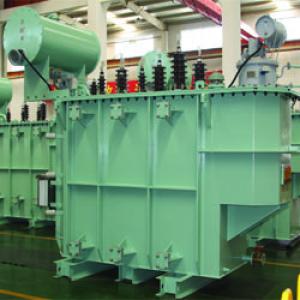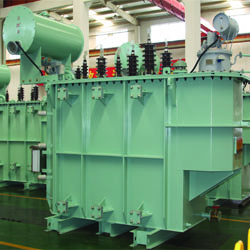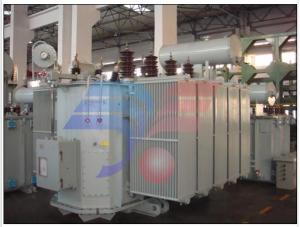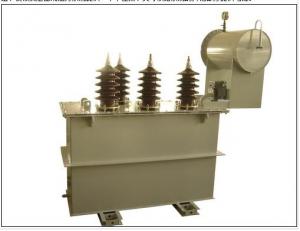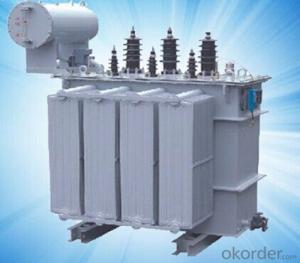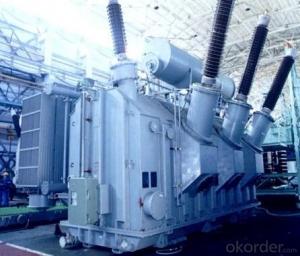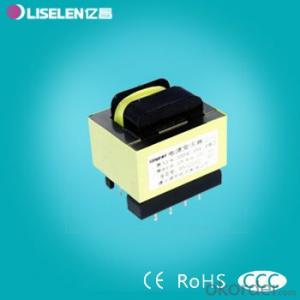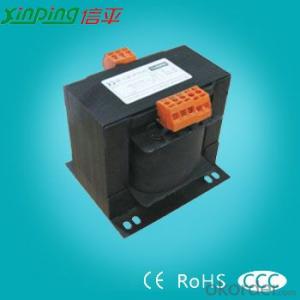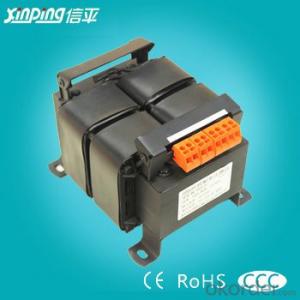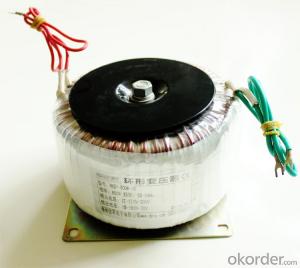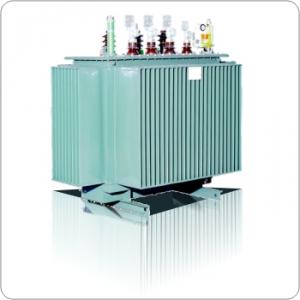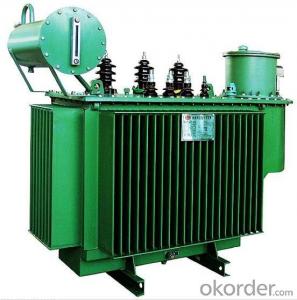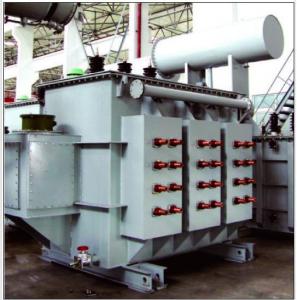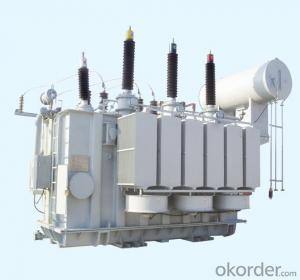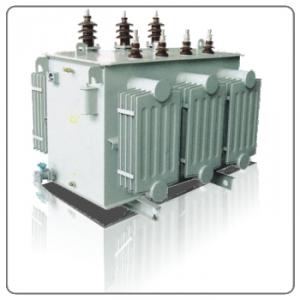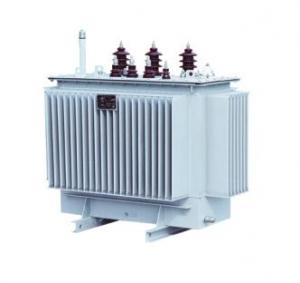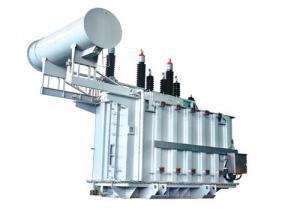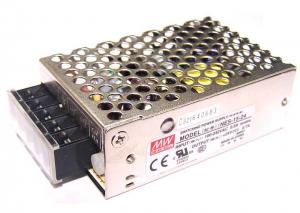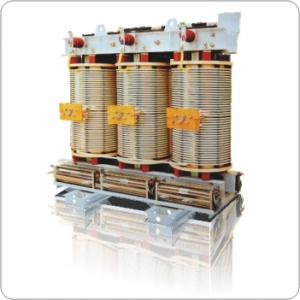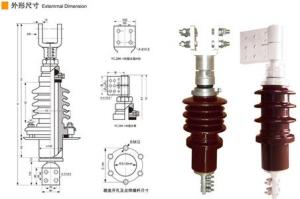S9 SZ9 S11 SZ11 35KV grade oil type transformer
- Loading Port:
- China Main Port
- Payment Terms:
- TT OR LC
- Min Order Qty:
- -
- Supply Capability:
- -
OKorder Service Pledge
OKorder Financial Service
You Might Also Like
35KV grade S9 series of oil-immersed power transformer
1. General
The three-phase oil-immersed distributing transformer applies new type insulating structure and makes short-circuit resistance strong. The iron core is made up of cold-rolled silicon-steel plate of high-quality. high –voltage winding group is made up of high-quality oxygen-free copper liner lines and it adopts multilayered drum type structure. All fasteners have been processed with special treatment to prevent them from loosening.
As high-tech product that promoted by the country, the product has many advantages such as high efficiency, low loss, its social benefits are remarkable that it will save much of electricity consumption and operating cost.
1. Technical parameters
Rated capacity (KVA) | Voltage combination(KV) | Vector group | Loss(KW) | No- load current | Impedance voltage | Weight(KG) | External dimension (mm) (L*B*H) | Gauge Longitudinal/transverse | ||||
HV | LV | No- load | load(75℃) | Equipment | Oil | total | ||||||
30 | 35 36.5 38
+5% | 0.4 | Yyn0 | 0.165 | 0.90 | 2 | 6.5 | 145 | 205 | 530 | 1010*1020*1425 | 550/550 |
50 | 0.21 | 1.25 | 2 | 210 | 195 | 585 | 1010*1020*1425 | |||||
80 | 0.28 | 1.80 | 1.8 | 285 | 225 | 735 | 1060*1125*1560 | |||||
100 | 0.31 | 2.03 | 1.8 | 340 | 225 | 830 | 1090*1150*1600 | |||||
125 | 0.34 | 2.39 | 1.7 | 395 | 270 | 950 | 1120*1150*1625 | 660/660 | ||||
160 | 0.37 | 2.85 | 1.5 | 475 | 285 | 1050 | 1130*1280*1680 | |||||
200 | 0.43 | 3.30 | 1.5 | 560 | 310 | 1190 | 1170*1300*1710 | |||||
250 | 0.52 | 3.96 | 1.4 | 650 | 350 | 1355 | 1250*1370*1735 | |||||
315 | 0.61 | 4.77 | 1.4 | 760 | 390 | 1565 | 1260*1370*1780 | |||||
400 | 0.75 | 5.76 | 1.3 | 925 | 490 | 1875 | 1810*1250*1865 | 820/820 | ||||
500 | 0.87 | 6.93 | 1.3 | 1085 | 550 | 2135 | 1850*1360*1920 | |||||
630 | 1.05 | 8.30 | 1.1 | 1285 | 615 | 2505 | 1900*1380*1990 | |||||
800 | 1.25 | 9.90 | 1.0 | 1530 | 720 | 2945 | 2100*1400*2075 | |||||
1000 | 1.44 | 12.20 | 0.7 | 1845 | 815 | 3500 | 2220*1430*2245 | |||||
1250 | 1.76 | 14.70 | 0.6 | 1930 | 935 | 3975 | 2260*1430*2250 | 1070/1070 | ||||
1600 | 2.15 | 17.55 | 0.6 | 2385 | 1070 | 4685 | 2300*1460*2470 | |||||
2000 | 2.61 | 21.50 | 0.6 | 2630 | 1090 | 4890 | 2380*1740*2350 | |||||
- Q: What is the SN on the transformer? What is the difference between it and the actual power of the transformer?
- Corresponding to the line of fire and the zero line, there is a L is the ground
- Q: Transformer 1KVA can load how much security, how to calculate the formula
- This is based on the voltage count, such as three-phase 380V. 1KVA current is basically 1.5A
- Q: I can get 1 game and i think ive narrowed it down to bully and transformers. I need you to tell me which one i should get and why. Also you could suggest another game that is light m or teen and lower. thanks
- Bully definately. Movie games aren't good.
- Q: I I am looking to buy a 208 to 480 transformer, would I simply buy a 480 to 208 and reverse the input and outputs? it's a 3 phase system and it is being supplied by an 80kW generator, then straight to an ATS to switch power from normal to emergency.
- Yes that would work.Just remember that the output current would be lower.
- Q: how the electronic transformer work?
- A transformer changes the amperage and / or voltage. It literally Transforms electrical energy. A ballast is like a capacitor. Think of a ballast as a short-term battery. It stores power then releases it as needed. A common example of a ballast is on fluorescent lights. Initially, a fluorescent light needs a big blast of energy to excite the gas molecules into emitting photons (light). Then it only needs a small amount of energy to keep the gas molecules in an excited state. However, that power has to be of consistent amperage and voltage. The ballast is designed to do that. The electrical ballast stores energy in the same way that a water ballast stores water for stability. Because the electrical ballast stores far more power than the device it regulates requires, it too provides a kind of electrical stability. That’s why you often see a fluorescent light flicker or “lose stability” when the ballast starts to go bad. A transformer transforms voltage and amperage up or down. A ballast provides a stabile power supply.
- Q: I would like to know if its possible to create my own transformer- preferably by producing my own windings. My goal is to make an open-air transformer encased in an acrylic box. I would like it be able to withstand a 15A load at 120V. I want the windings to be 1:1 so that the power is just transferred through the magnetic field, not stepped up or stepped down.The purpose would be to power my PC through it, just because I think it would be cool to look at the box and imagine the energy transferring through the air to my screen. Obviously, it's doing that out in the street, and a thousand other places before it gets to me, but I don't get to see any of it!Any one have any suggestions? If it's way to difficult or expensive to make my own inductors, what kind of inducts would I need to buy, and how close would the need to be to each other?
- Listen to Mr. Hobart's advice.
- Q: how transformer came to know that it has to draw lagging current during summers
- The transformer itself is inductive, as others have said, so it will always appear as a lagging load. Now, in the summer, most people are using their air conditioning systems, which are quite inductive because they're essentially just motors. So, the load attached to the transformer could be a good bit more inductive than in other seasons.
- Q: What is the temperature of the dry-type transformer?
- It depends on the insulation of the transformer is how much. Generally the highest temperature has 105/120/130/155 degrees and so on. Normal use, more than 80 degrees on the need to use the cooling measures. Another dry-type transformers do not install the temperature sensor, then it is not alarm, only installed the temperature sensor will!
- Q: If a typical class 2 transformer is rated at 40 va.what is its true power rating(purely resistive load)and how is it calculated? Thx
- If the load is purely resistive then the power factor is 1. This is because the true power is equal to the apparent power. The reason the true power is not always the same as the apparent power is because the load may be either capacitive or inductive. This causes the phase of the current waveform to be either leading or lagging compared to the voltage waveform. Power is still the voltage times the current but since they are out of sync if you slice up the waveform into small segments and do the calculation for each slice and the average them all together the real power is less then the apparent power. The apparent power is the the product of the rms voltage and the rms current. The answer to your question is that the true power rating is the same as the apparent power rating. It is not calculated because by definition if the load is purely resistive the true power rating is the same as the apparent power rating. I hope this helps.
- Q: if the transformer in a wall charger steps down the voltage from my wall to 120V does this mean i could use it in the reverse direction as a step up transformer? I want to combine 4 car batteries making 48V and plenty of amperage, but what can i use to get it up to 120V for my 1/2 hp motor?
- Not you can't really because transformers need AC (alternating current) to work. So your charger has got a rectifier in it and possibly some kind of a regulator circuit. You could use 10 car or motor bike batteries in series to get 120 VDC but PLEASE BE CAREFUL. You could get a nasty shock at 120 volts.
Send your message to us
S9 SZ9 S11 SZ11 35KV grade oil type transformer
- Loading Port:
- China Main Port
- Payment Terms:
- TT OR LC
- Min Order Qty:
- -
- Supply Capability:
- -
OKorder Service Pledge
OKorder Financial Service
Similar products
Hot products
Hot Searches
